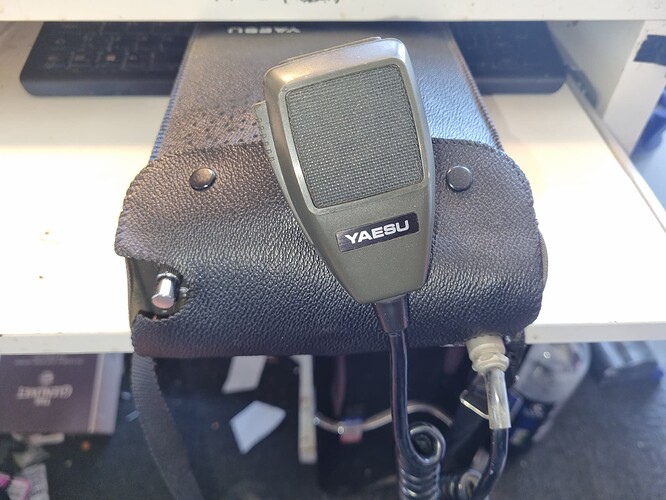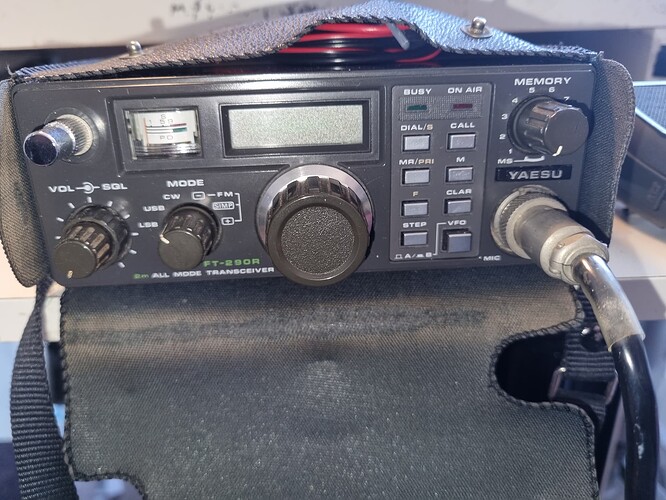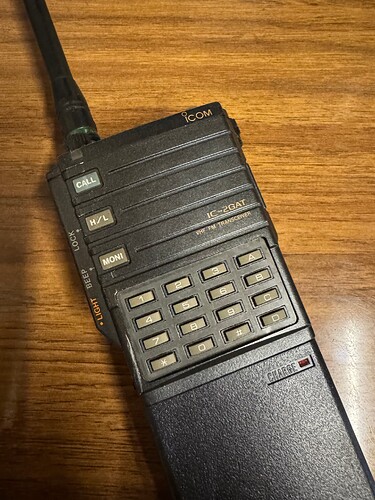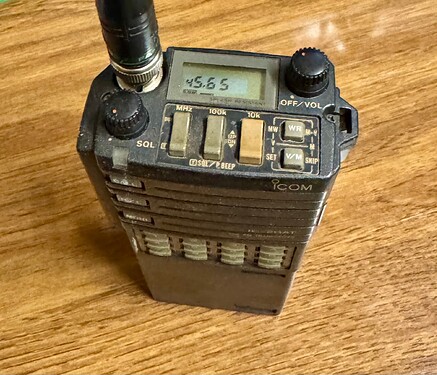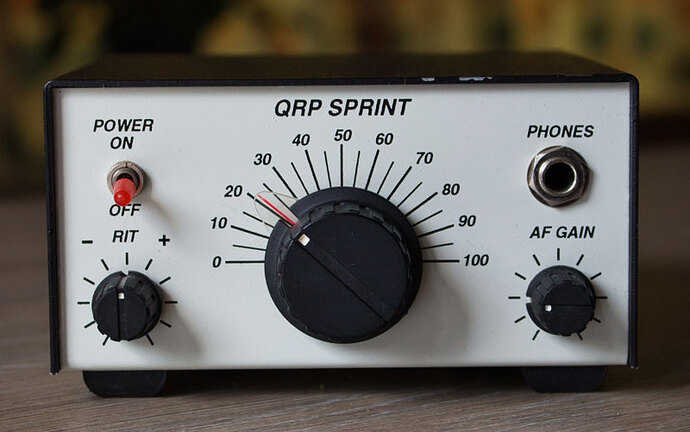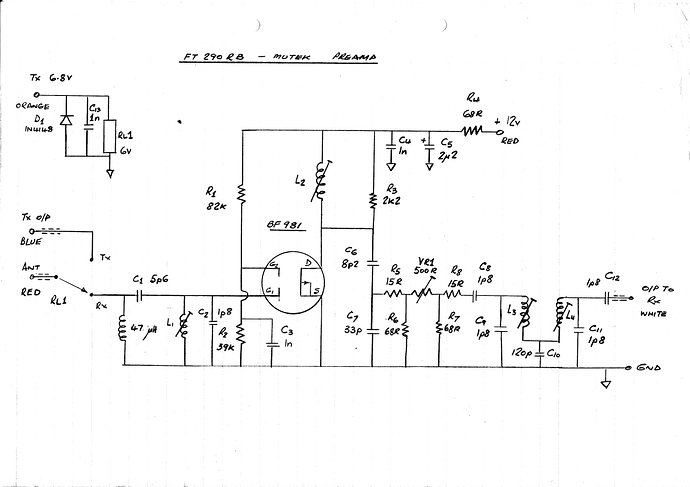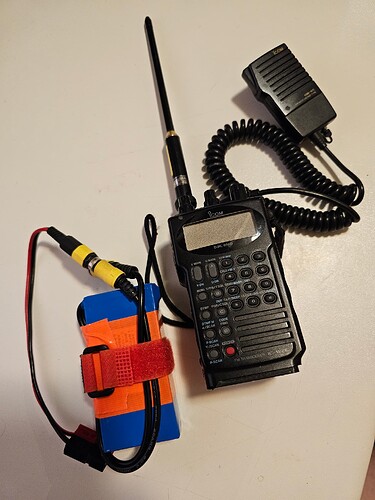No but I always consider SWLing as chasing so most of chasing’s rules etc. would apply.
After telling my self I am not buying anymore radio’s… Ive purchsed a Icom IC-H16 and a Trio TR-2300.
Number of radios is always N+1
Old radios you say?? could be time to fire this old girl up then for an activation!
The trusty old FT290R… not the most powerful thing in the world, but still good enough to make a few contacts on!
Alan
My first rig was an Icom IC2E handheld for 2m FM. It’s NiCd batteries are long gone but I’ll have to see if the battery eliminator I made still works. Also not sure if the wider FM deviation will cause a problem.
Someone put their FT-290R and FT-790R for sale on a local forum, I wouldn’t have noticed them without this thread.
€200 each with their respective linear amplifiers, FL2010 and FL7010, doubtful.
Nope.
I’ve just found this fine site with some details of the older Japanese radios. Ok it’s in Japanese but you can figure out most of what is going on and you can always switch on auto-translate in your browser or use Google translate.
http://www.radio-spot.sakura.ne.jp
Of the sets pictured, I have a TR-7010, TR-2300 and until recently had a TR-7200G (fully crystalled) that was in perfect condition. Also had TR-2200G without rocks for a short time. I used to have a Trio TR-1000 6m AM set in the mid-90s.
How about a multiplier based on the nominal age of the gear?
(Thanks and acknowledgment to Dave W9FDA…)
The serialisation of Yaesu Equipment:
For those who may not know here’s how to decipher your serial number.
The first digit in a YAESU serial number indicates the year of manufacture. The second digit, typically a letter, indicates the month of manufacture. The way to determine the month is to take the position of the letter in the alphabet (C=3, D=4… N=14) and subtract 2 from that number. Hence radios with an “L” are October radios (L=12, 12 - 2 = 10, October=10th month), radios with an “M” are November, “N” is December, “C” is January, etc. The next two digits indicate a manufacturing “run” number. The final four digits are the order in the production run. For example, if a radio has a serial number of 6K050095, then by using the above explanation you can determine that it was built in September 2006 and was the 95th unit of production run 5.
73 Phil G4OBK (About to age his FT-1500M “hammer”)
Hi all,
Started working with the TS-520 from the J28AG (FL8GT for those who know ) radio club and just few month later with a well know Atlas 210X (one of the small 1st all transistors all mode)… 1978
1982 playing with an IC-720A as FK8KAA
1982 to 84 joking with an FT-707 as FK0AQ and later with an IC-740 and IC-730…
What was my better TRX after ?
I’ve in my shack my favorite Kenwood TS-850Sat to chase every day since 1994 (31 year)
Had an FT-290R since 1986 and used an IC-2Gat (1994) in SOTA 3 year ago 2 times
73, Éric F5JKK
My oldest chaser radios are in the 65 to 70 year range! You can see partial pictures of them on my QRZ page. The Viking Ranger transmitter is from 1955, the Collins 51S1 .receiver and KWM-2 transceiver are 1959 vintage. And they all work just fine! The only
problem is doing quick band changes, especially with the Ranger.
Lots of knobs to twist, and no WARC bands on the Ranger and KWM-2.
73,
John, K6YK
Still have my Oak Hills Research QRP Sprint 40m rig; DC RX, CW TX 1W o/p. Built it from a kit in the 1980s.
I recall working DL (abt 1000km) and others using a low 40m dipole from the Cleveland Hills / Guisborough Moor. Indeed, I have some video footage of a live QSO, taken by my late pal Geoff with his VHS Camera. Back then, a phone was a phone ![]()
Like others, I have an FT290R Mk1. Got this new from ‘Bernie and Brenda’ (visited shop in Newton-Le-Willows?) back in 1984. Fitted a Mutek GAsFET preamp to help with /P OPs.
73 Dave
That was Peter and Elaine at ARE in Newton le Willows but they may have been an offshoot of Bernie and Brenda before becoming independent. I spent a lot of money there over the years!
It will be easier if we count who doesn’t have an FT290Mk I ![]()
How about using old digital gear.
I do have an old PK88 packet TNC in the garage that I think still works. Shame I dont have the FT-203 handie that I used it with, but then was loaned to someone some years ago. Would I need to find a similar computer to make it vintage enough?
Any of the old AMtor, RTTY or SSTV stuff could count too. I have vivid memories of a rtty machine setup at college (G4WCR) which we weren’t allowed to use during lesson time due to the racket it made. Whilst it was on wheels, good luck pushing that thing up any sort of incline.
Ian
FT290R - Mutek Preamp Update
Further research reveals the active device to be a BF981 dual-gate N-channel MOSFET, not a GAsFET. I managed to locate a contemporaneous piece of reverse-engineering - see ‘PencilCAD’ drawing below.
73 D
PS The pedantic will notice immediately that the arrow on the BF981 substrate connection (which is strapped to the Source) is pointing in the wrong direction. For an N-channel device it should be pointing ‘inwards’ ![]()
My only home QTH transceiver is a TEN-TEC Argosy ii. About 40 year old?
A couple of things don’t work, but I don’t really need them. I can’t even remember what are.
Oldie but goodie.
Icom W2E is still more than useful on QRM-rich summits.
Of-course external power is needed to reach 5W.
Primož
Brian and Andy,
How about a multiplier based on the rig age plus the age of the operator? Special mention for using gear older than the operator?
73
Ron
VK3AFW
Hmm! Perhaps I can borrow a spark transmitter from a museum! ![]()
